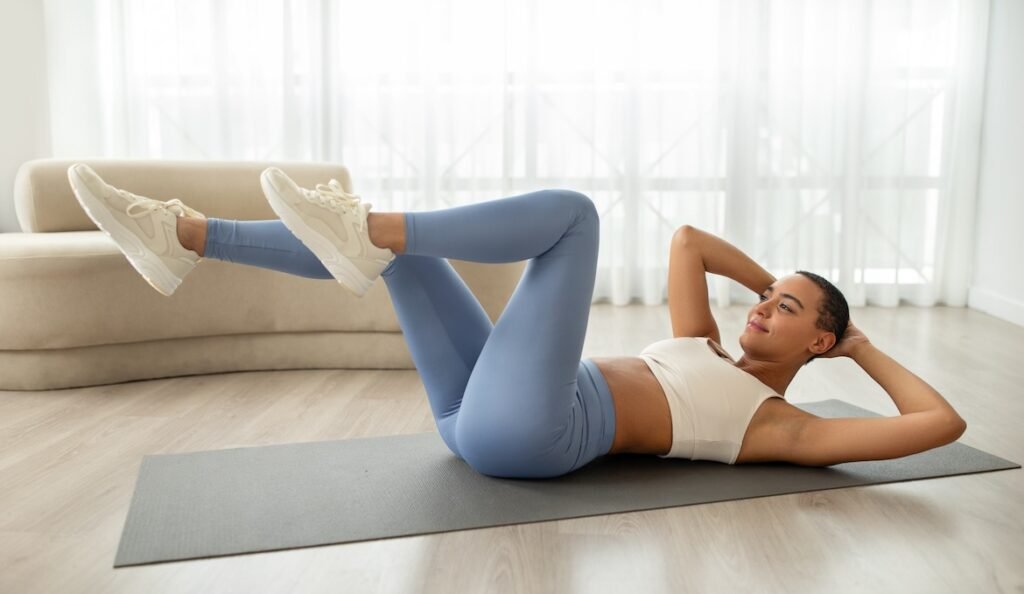However, there are some key differences between abs and core muscles. Simply put, your core includes your abs, but your abs don’t include your entire core. While strong abs are important, they’re not enough only Train your abs and ignore the rest of your core.
To better understand the nuances between core training and ab training, and to get step-by-step instructions on how to supercharge both, we spoke with two fitness experts.
What is your core?
Your core encompasses everything from your hips to the base of your chest, says Mathew Forzaglia, CPT, CFSC, certified personal trainer and functional strength coach, founder of Forzag Fitness. “We’re talking about the pelvic floor, internal and external obliques, transversus abdominis, rectus abdominis and erector spinae,” he explains.
You can think of your core like a corset or weightlifting belt, and it also includes the quadratus lumborum muscles in your lower back, says physical therapist and certified strength and conditioning specialist Grayson Wickham, PT, DPT, CSCS, founder of Movement Vault. “When we think of the core, we think of all the muscles surrounding the abdomen,” he explains.
The core is a source of support and stability. It protects your organs and spine, allowing you to maintain an upright posture and control abdominal pressure. Your core muscles are also involved in flexion, side bending, extension, and rotation of the trunk. In other words, twisting, side bending, arching, and rounding your back are all made possible because of the core.
What are your abs?
Most people use the term “abs” (short for abdominal muscles) to refer to the rectus abdominis. “These are the ‘six-packs’ you see from the front of the body,” says Forzalia. Your abdominal muscles flex your spine and protect the internal organs behind it.
Technically speaking, the abdominal muscles are not just the rectus abdominis, but include the internal obliques, external obliques, transversus abdominis, and the pyramidal muscles, which are thought to tighten the connective tissue in the middle of the rectus abdominis.
Like your core, your abdominal muscles provide support, stability, mobility, intrinsic stress regulation, and protection.
“We must remember that everyone is an athlete. Everyone must move throughout the day. —Grayson Wickham, PT, DPT, CSCS
The difference between core muscles and abdominal muscles
While the abdominal muscles are part of the core, the core includes the abdominal muscles and all the other muscles that make up the abdomen, including the pelvic floor muscles, erector spinae, and quadratus lumborum. Essentially, “core” is a broad umbrella term that refers to the entire abdomen, while “abs” refers to specific muscle groups within the core.
The benefits of a strong core
If you think of your body as a house, the core is its frame, Forzalia says. “If your frame is weak, the rest of the house can easily collapse,” he says, noting that an unstable core can lead to imbalances and motion compensations that can lead to injuries.
Wickham says a weak core can also lead to tightness in other areas of the body, especially the hips. “Your body is always looking for stability. So if your core doesn’t have stability, it’s likely to steal it from the next available joint,” he says.
Strengthening your core will not only protect you from inefficient movement patterns, pain, and injury, but it can also help improve your posture by offsetting time spent sitting or hunching over. and Research1 Shows that a strong core can improve performance by optimizing an athlete’s strength and motor control.
“We have to remember that everyone is an athlete,” Wickham said. “Everyone has to move throughout their day. Everyone has to do some type of movement, whether it’s bending and twisting to pick up a 10-pound box or grabbing a barbell off the floor.
The Best Core Exercises to Add to Your Workout
During your next strength training session, fire up your entire midsection with these core exercises demonstrated by Forzaglia. Choose a few to incorporate into your daily training, or perform them consecutively in a core-centered circuit. You’ll need a large medicine ball and at least one set of dumbbells or kettlebells.
1. Bear crawling
- Start in a tabletop position on all fours with your wrists directly under your shoulders and your knees under your hips.
- Keeping your back flat, neck neutral, and core engaged, lift your knees an inch or two off the ground.
- At the same time, step forward with your right hand and left foot. Then, step forward with your left hand and right foot.
- Continue using your other arm and leg to move forward the prescribed number of steps or distance.
- Then, take a step back to the starting point using the same movement pattern on the opposite side.
- repeat.
2. Stir the pot
- Kneel in front of a large exercise ball and rest your forearms on it.
- Lift your knees off the ground and shift your weight forward onto the ball so that you’re in an elevated plank position.
- Keeping your torso and hips still, rotate your arms clockwise to “stir the pot.”
- Then, wrap your arms in a counterclockwise direction.
- Repeat specified number of times in alternating directions.
3. Half kneeling halo
- Start in a half-kneeling position with your right foot in front and left foot in back.
- Hold a kettlebell or dumbbell with both hands so that it is at chin level.
- Wrap the weight in a “halo” around your head: Lift the weight to the outside of your left ear, bring it around the back of your head toward your right ear, and draw a circular grade at your chin in front of your face.
- Repeat the halo movement, moving in the opposite direction.
- Repeat the sequence a specified number of times.
4. Carried by farmers
- Holding a kettlebell or dumbbell in each hand, stand with your feet hip-width apart and your arms at your sides. Keep your shoulders back, chin level, and core tight.
- Walk forward slowly for the prescribed number of steps or distance. Focus on keeping your chest up and your ribcage over your hips.
The Best Ab Exercises to Add to Your Daily Life
If you’re looking for a more abs-focused workout, challenge yourself with these four moves Forzaglia demonstrates. As with the core exercises, you can incorporate them into your training or complete all four exercises as a circuit. You’ll need an ab roller, a pull-up bar, and a weight or stable structure, such as weights or a weight bar.
1. Abdominal muscle training
- Start in a kneeling position. Rotate your hips forward and hold your ab roller by the handles with your shoulders directly over your wrists.
- Keeping your abs tight, arms straight, knees forward, let the ab roller roll in front of you. Go as far as you can while keeping your back flat and your neck in a neutral position.
- Contract your abdominal muscles and roll the ab roller back to the starting position.
- Repeat for the prescribed number of repetitions.
2. Suspension knee lift
- Grab an overhead barbell with your hands slightly wider than shoulder-width apart, palms facing away from your body.
- Lift your feet off the ground so you’re hanging from the bar.
- Keeping your core tight, your shoulders dropped (don’t let them hunch around your ears), and pull your knees up toward your chest.
- Lower your feet but don’t let them rest on the floor.
- Pull your knees to your chest again.
- Repeat for the prescribed number of repetitions.
3. Dragonfly
- Lie on your back and raise your arms straight above your head. Hold onto a weight or the base of a stable structure, such as a pole or weight lifting equipment, to maintain stability.
- Keeping your lower back in contact with the floor, straighten your legs and lift your feet an inch or two off the floor. (If your lower back is arched, raise your legs higher.) This is the starting position.
- Lift your legs so that your knees and ankles are directly over your hips, then use your abs to lift your hips off the floor.
- Slowly lower your hips and legs until your feet are an inch or two or more above the ground.
- Repeat for the prescribed number of repetitions.
4. Hollow grip
- Lie on your back with your arms extended overhead.
- Tighten your core muscles and lift your shoulders, arms, legs, and feet off the floor. (The closer your legs and feet are to the ground, the more difficult the exercise will be.) Keep your neck neutral and your legs straight and together.
- Maintain the hollow position for the prescribed time.
Well+Good articles reference scientific, reliable, up-to-date, and robust research to support the information we share. You can count on us on your health journey.
- Luo S, Soh KG, Soh KL, Sun H, Nasiruddin NJM, Du C, Zhai X. Effects of core training on athlete skill performance: a systematic review. Pre-Physiology. 2022 Jun 6;13:915259. DOI: 10.3389/fphys.2022.915259. Phone number: 35755428; PMCID: PMC9227831.

